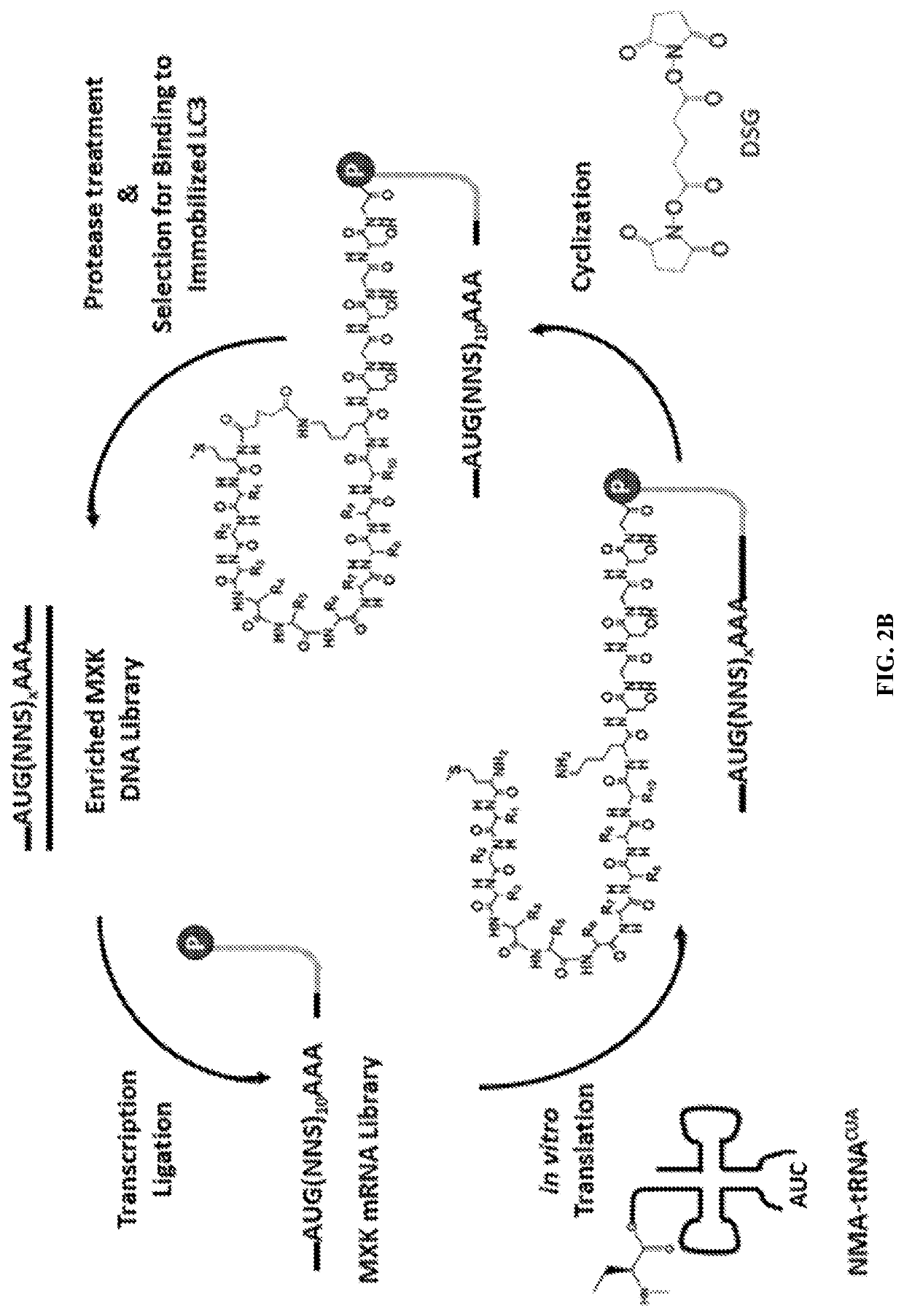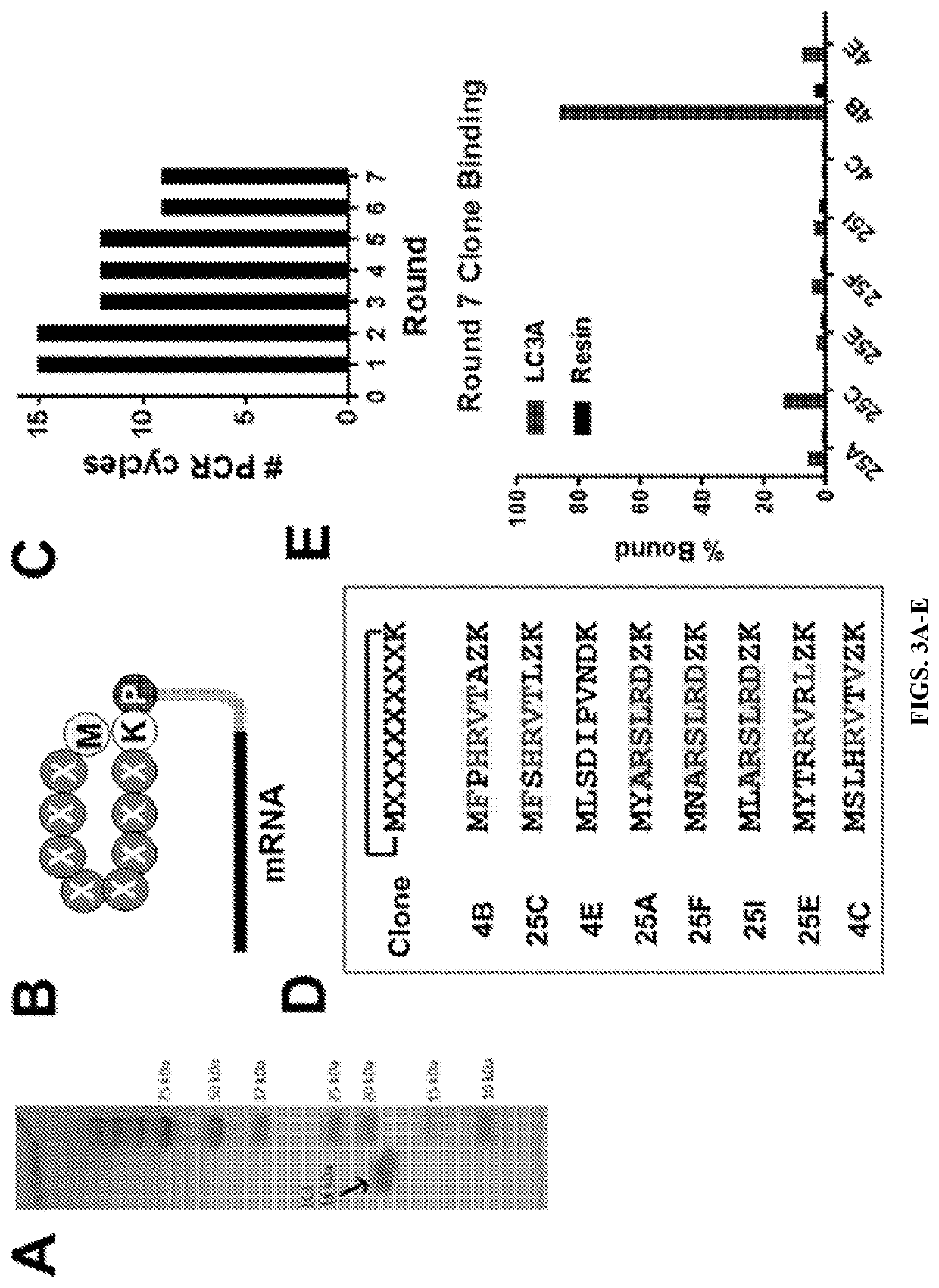Macrocyclic peptides for targeted inhibition of autophagy
a peptide and macrocyclic technology, applied in the field of medicine, can solve the problems of unfavorable pharmacokinetics, high normal tissue toxicity, and serious drawbacks of compounded drugs, and achieve the effects of improving normal tissue toxicity, reducing the risk of side effects, and improving the effect of cq & hcq
- Summary
- Abstract
- Description
- Claims
- Application Information
AI Technical Summary
Benefits of technology
Problems solved by technology
Method used
Image
Examples
example 1
ic Peptides for Targeted Inhibition of Autophagy
[0145]LC3, an 18 kDa ubiquitin-like protein, plays a critical role in the maturation of autophagosomes and the selective recruitment of cargo to the autophagosome interior (FIG. 1). Novel ligands that selectively bind to LC3 could be of immense value for tracking autophagy in living cells and for disrupting protein-protein interactions critical for autophagosome function. By disrupting autophagosome formation and maturation, rather than inhibiting the lysosome—which plays essential roles in many essential cellular processes in both normal and malignant tissue—much of the normal-tissue toxicity associated with CQ treatment can be avoided while still achieving a synergistic anti-tumor effect when combined with chemotherapy or radiation. SUPR (Scanning Unnatural Protease Resistant) peptide mRNA display has been used to design LC3-targeted macrocyclic peptides for inhibition and molecular imaging of autophagy. SUPR peptide mRNA display is ...
PUM
 Login to View More
Login to View More Abstract
Description
Claims
Application Information
 Login to View More
Login to View More - R&D
- Intellectual Property
- Life Sciences
- Materials
- Tech Scout
- Unparalleled Data Quality
- Higher Quality Content
- 60% Fewer Hallucinations
Browse by: Latest US Patents, China's latest patents, Technical Efficacy Thesaurus, Application Domain, Technology Topic, Popular Technical Reports.
© 2025 PatSnap. All rights reserved.Legal|Privacy policy|Modern Slavery Act Transparency Statement|Sitemap|About US| Contact US: help@patsnap.com



